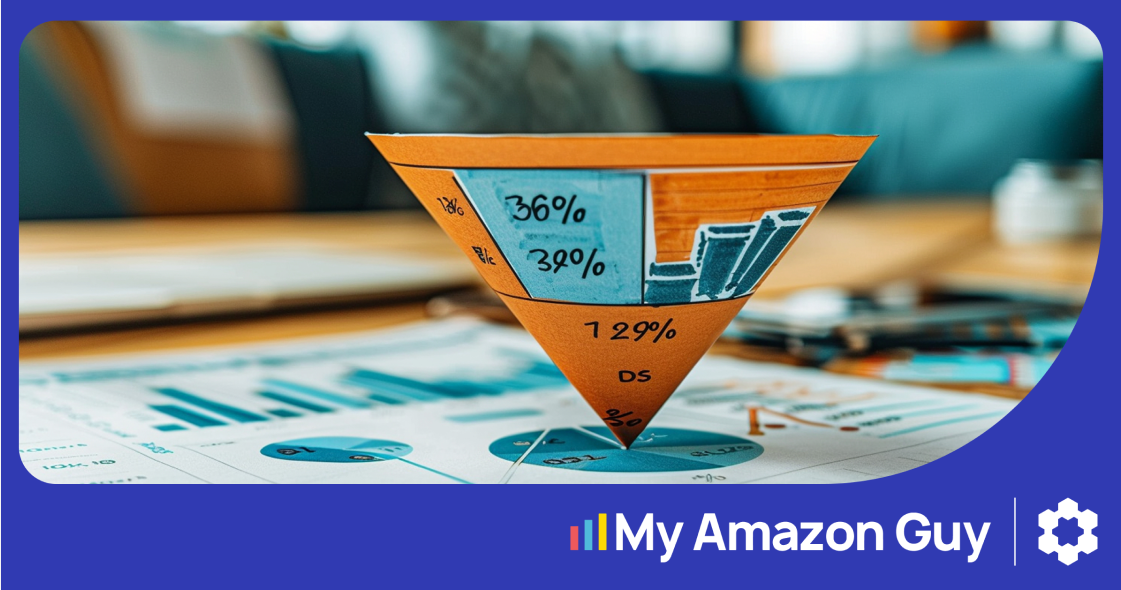Amazon sellers need access to capital to invest in their business and accelerate growth. However, access to financing has become more difficult since Amazon stopped offering loans to sellers on its platform.
This post discusses financing for Amazon sellers and outlines the pros and cons of each type of seller. By the end of this article, you will have a better idea about which financing option is best for your business.
Sellers Have Unique Amazon FBA Funding Needs
Amazon sellers face several challenges that are unfamiliar to most brick-and-mortar businesses. These include large upfront costs and long payment delays. Combined, these cash flow challenges make access to capital more essential for Amazon sellers than for just about any other type of business.
As many Amazon sellers know, having access to sufficient inventory is an ever-present concern. Due to high inventory turnover and storage challenges, sellers must order or manufacture inventory well in advance to meet demand. Running low on inventory is problematic not just for the bottom line but also for the seller’s reputation.
Sellers must also contend with high marketing and shipping costs. Amazon is a competitive marketplace filled with an almost endless number of products. Unlike brick-and-mortar stores, which can rely on foot traffic and window displays, Amazon sellers often have to advertise for their products to be seen.
Boost your rank and Return on Ad Spend with Carbon6’s revolutionary off-Amazon advertising solution.
Finally, Amazon sellers must wait longer for payment than standard retail businesses. New sellers face an especially long wait time for payment and often have difficulty re-stocking their inventory due to cash shortages. Even well-established sellers have long delays on certain sales when Amazon determines that it requires additional time to release the payment.

Financing for Amazon Sellers
When it comes to financing your Amazon business, it’s helpful to consider your unique needs based on the type of Amazon seller you are. There is significant variety when it comes to Amazon sellers and we’ll outline the best funding solutions for each type listed below:
- New seller
- Experienced seller
- Seasonal seller
- Year-round seller
- First-party (1P) seller
- Third-party (3P) seller
- Fulfilled by Amazon (FBA) seller
- Fulfilled by Merchant (FBM) seller
New vs. Experienced Seller
New Seller
New sellers often face unique Amazon financing challenges. Typically, they struggle to qualify for traditional bank loans because they can’t show past revenue generation and haven’t built up credit over time. Banks view them as risky and prefer to lend to more traditional brick-and-mortar businesses.
While startup loans or lines of credit would be ideal for the needs of new businesses, they simply aren’t available in most cases. As a result, many new Amazon sellers use credit cards or a daily advance program to provide startup funding and fill in cash flow gaps.
Credit cards offer several advantages. They help new businesses build up credit to qualify for other types of financing in the future. As a bonus, credit cards offer rewards that can be used to save money on a whole range of services such as rental cars, hotel stays, and flights.
As many sellers know, advertising on Amazon has become a standard cost of doing business. Again, credit cards are a good place to turn because they are convenient and rewarding for this type of recurring cost. However, like all credit cards, it is important to pay them off regularly to avoid the large interest that can accrue on late payments.
Sellers starting out on Amazon can also benefit tremendously by using a daily advance program to accelerate their receivables from Amazon. Typically most sellers receive their sales disbursements (the net of fees, refunds, and advertising spend) every two weeks.
However, for early stage sellers there are programs that enable them to access the previous day’s net sales instantly for a small fee. This program allows sellers to reinvest into their marketing budget much sooner without having to borrow from a lender.
Experienced Seller
Experienced sellers have many more Amazon business funding options, primarily because they can produce documentation related to revenue numbers and creditworthiness. They can consider a whole host of options, including inventory financing lines, bank loans including SBA loans, revolving lines of credit, revenue-based financing, and asset-based financing.
Small business loans and Small Business Administration (SBA) loans are attractive options for experienced sellers. These loans are ideal because they can provide significant funds at reasonable interest rates. Long loan terms (up to 10 years in some cases) also provide experienced sellers increased flexibility.
While small business and SBA loans do offer attractive terms, the application process and/or loan decision times can be longer than other options with stricter underwriting requirements. Due to the nature of the business, most Amazon sellers need funds quickly to fill cash flow gaps or take advantage of short-term growth opportunities.
Experienced sellers who can secure a small business or SBA loan may still want to consider using a line of credit or credit cards for certain purchases. Advertising brings in customers and experienced sellers typically spread their advertising across many channels. By putting those recurring expenses on a credit card, experienced sellers can rack up the reward points.
Seasonal vs Year-Round Seller
Seasonal Seller
Seasonal sellers often struggle with cash flow issues throughout the year. They must make large inventory-related purchases ahead of the busy season and withstand low sales volume in the slow season.
A revolving line of credit (LOC) is an excellent option for seasonal sellers. LOCs can be obtained from various sources, including traditional banks, online banks, and certain fintech companies. Seasonal sellers can borrow up to the maximum of their credit limit and pay the funds back over time.
Seasonal sellers enjoy the on-demand nature of LOCs. Funds can be obtained quickly and spent on anything the seller needs. Interest is only owed on the amount of credit used, and there typically aren’t any limits on the number of times sellers can draw funds until the credit limit is reached.
While LOCs provide a high degree of flexibility and offer many benefits, they also have a few drawbacks. The approval process can be more involved than other funding options. Sellers may be required to provide collateral in order to receive approval for the LOC, and loan amounts are commonly lower than small business loans and SBA loans. They will also typically have a shorter repayment term ranging from 6-18 months.
Year-Round Seller
Year-round sellers tend to enjoy consistent demand throughout the year. For them, the primary goals involve maintaining healthy inventory levels while growing their business and ensuring that their marketing and supply chain is functioning smoothly.
Year-round sellers may choose to invest in their business to streamline or expand their operations. Because they have a track record of consistent revenue, year-round sellers can often qualify for loans that other sellers can’t.
In general, small business loans and SBA loans offer the longest repayment terms compared to other Amazon lending options. For businesses looking for more flexible repayment terms, inventory financing programs may be a better option.
Should year-round sellers need additional financing, it makes sense to pursue these options first to secure the most advantageous loan terms. Just keep in mind that the application process is extensive, and lenders may require good credit and strong financial performance.

1P vs 3P Seller
1P Seller
On Amazon, sellers are either 1P or 3P. When operating in a 1P relationship, Amazon acts as the retailer and the 1P seller acts as the wholesaler to Amazon. 1P sellers have substantial manufacturing/inventory procurement and fulfillment expenses, which make access to external funding critical.
Purchase order financing is a good option for 1P sellers to consider. This type of Amazon financing allows wholesalers to fulfill large orders when they need more working capital or cash flow to produce the products on order.
It’s important to understand how purchase order financing works before signing an agreement. The process begins when a seller receives a large order that it doesn’t have the financial ability to fulfill. The seller then contacts a purchase order financing lender and applies for funds.
After the purchase order financing lender performs its due diligence, the lender will often pay the manufacturer or supplier directly and the seller repays the financing under the agreed terms.
3P Seller
When operating in a 3P relationship, the 3P seller uses the Amazon platform to sell directly to their customers. While traditional bank loans, SBA loans, LOCs, and credit cards are still good Amazon financing for sellers, revenue-based financing might be a quicker option when they need an infusion of cash.
Revenue-based financing is fairly straightforward. It is an advance that the seller agrees to pay back over time by promising the funder a percentage of their future revenue. The primary advantage to sellers of revenue-based financing is speed and high approval rates.
Revenue-based advances are often approved quickly, allowing sellers to get the money they need fast. There is also less pressure to pay back the advances according to a set schedule. The payback period is determined by the amount of revenue the seller can generate.
FBA vs. FBM Seller
FBA seller
As an FBA seller, you store your products in Amazon’s fulfillment centers, and they pack and ship your items to the customer.
When it comes to funding for FBA sellers, Amazon loans used to be a great place to start looking. However, since Amazon seller lending is no longer offering loans, it makes sense to look into other options.
Assuming you can qualify for sufficient funds to manufacture or purchase inventory, combining an LOC with credit cards is a flexible option many FBA sellers use. The LOC provides cash when necessary, while the credit cards offer rewards and cash back on business purchases.
FBM seller
FBM sellers pack and ship products directly to their customers instead of relying on Amazon’s fulfillment centers and logistics network. Being an FBM seller is ideal for certain types of businesses, especially those that sell large/heavy products or lack the high sales volume that FBA sellers typically have.
While many of the loans discussed above are good options, FBM sellers may also want to consider inventory financing. These types of loans are ideal for businesses that keep a sizable amount of inventory on hand.
By using the inventory as loan collateral, FBM sellers can access funds to cover cash flow needs, build/purchase more inventory, or accelerate growth. Unlike many other loan options, inventory financing does not require the seller to have an excellent credit rating or pristine financials. FBM sellers may also need financing to purchase real estate or equipment if they plan to own and operate their own facility.

Boosting Sales and Securing Loans with Inventory Management
Inventory management systems (IMS) like SoStocked play a crucial role in helping Amazon sellers improve their sales performance, thereby enhancing their eligibility for inventory loans. These systems offer several benefits that streamline operations, optimize stock levels, and provide valuable data for securing financing.
Improved Stock Control
One significant advantage of inventory management is improved stock control. Overstocking ties up capital, while understocking leads to lost sales opportunities.
Putting an inventory system in place helps sellers maintain optimal inventory levels by forecasting demand accurately based on historical sales data and trends. For instance, a seller using an IMS can avoid overstocking a product that’s out of season, freeing up cash flow and ensuring that capital is available for more in-demand items.
This balanced approach can make the business more attractive to lenders.
Enhanced Sales Forecasting
Enhanced sales forecasting is another benefit. Inaccurate sales forecasting can lead to inventory shortages or surpluses. Inventory management systems use algorithms to predict future sales, allowing sellers to order the right amount of stock.
For example, a seller of seasonal items like holiday decorations can use an IMS to predict sales spikes accurately and ensure adequate inventory levels to meet demand, which can lead to consistent sales growth and a stronger financial position for loan applications.
Automated Reordering
Automated reordering is also a major advantage. Manually tracking inventory and placing reorders can be time-consuming and prone to errors. An IMS can automate the reordering process by setting reorder points and automatically generating purchase orders when stock falls below a certain level. For instance, a seller of fast-moving consumer goods can set up automatic reordering, ensuring they never run out of stock and miss sales opportunities, leading to higher sales volume and better loan qualifications.
Reduced Holding Costs
An IMS helps reduce holding costs by optimizing inventory turnover rates. High inventory holding costs can strain a seller’s finances.
A seller using an IMS to manage electronics inventory can reduce the amount of obsolete stock, lowering holding costs and improving cash flow, which is favorable for loan qualification. Better supplier management is another benefit. Inconsistent supplier performance can affect inventory levels and sales. An IMS provides insights into supplier performance, helping sellers choose reliable suppliers and negotiate better terms.
Suppose a seller can use data from an IMS to identify and work with suppliers who consistently deliver on time and with good quality, ensuring a steady supply of products and stable sales, thus improving their financial profile for inventory loans.
Data-Driven Decision Making
Data-driven decision-making is another key benefit. Lack of actionable insights can hinder strategic planning and sales optimization. Inventory management systems provide detailed reports and analytics on sales trends, inventory levels, and customer preferences.
For example, a seller analyzing IMS data can identify best-selling products and focus marketing efforts on these items, boosting sales and demonstrating to lenders a strong, data-backed business strategy.
Accurate Financial Reporting
Lastly, inventory management ensures accurate financial reporting. Inaccurate financial records can undermine loan applications. An IMS integrates with accounting systems to provide accurate financial data.
Imagine using an IMS to generate accurate financial records like SoStocked’s inventory valuation and Cost of Goods Sold report that reflect inventory values and sales performance. Access to these reports will help you to provide lenders with reliable information to assess loan applications.
All of Your Funding Options in One Place
With Amazon discontinuing direct lending on its platform, sellers are looking for new sources of business financing.
Top financing for Amazon sellers like Yardline make it easy for you to get the funds you need to grow your business. On Yardline for example, you can complete a 3-minute application and get approved in as fast as 24 hours for the type of financing that best fits your needs, such as inventory loans, credit cards, small business loans, revenue-based financing, revolving lines of credit, purchase order financing, and more. If qualified, you can get $5k to $20 million in funding.
Additionally, be sure to leverage inventory management platforms like SoStocked to not only improve your sales performance but also present a well-managed, financially stable business to lenders, thereby increasing your chances of qualifying for inventory loans.








